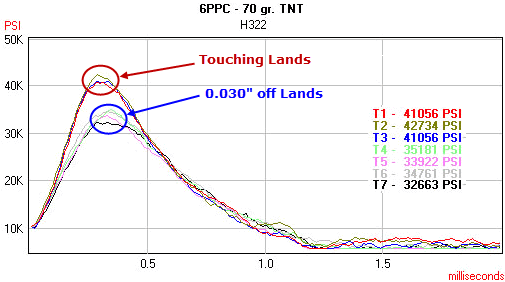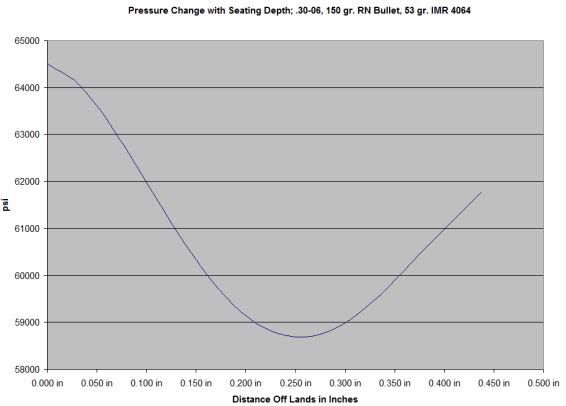In you new #7 manual you list "Case Holds" "XX.X gr Water"
In my experience there are two type of H20 case capacity measurements.
One being "Case Water Capacity" which is the weight of water in grains that fits in the case under the seated bullet.
The other and more useful to the handloader is "Case Water Overflow" which is how much water fits in an empty fired case, level with the mouth; no meniscus (and no bullet).
The "Overflow" method allows for the handloader to determine which headstamps have more internal capacity and which ones have less internal capacity so he/she can adjust load accordingly.
By looking at your data I would have to assume that you are using the "Water under the seated bullet" method. I say this because even thought you are using the same Nosler brass your case capacity data is different with different bullets. For example your 30-06 water capacity ranges from 59.7gr of H20 to 67.7gr of H20 with identical Nosler brass.
Am I correct in assuming you are using the weight of water in grains that fits under the seated bullet? If so why and what use is this to the average handloader?
I can tell you that on several loading forums many a handloader are confused as to what your water capacity actually means.
Take your 223 data for example, you have H20 capacity ranging from 26.5gr to 28.2gr H20. Most handloader that check internal capacity by the "Overflow method" have about 30+gr H20. They interpret your data to mean that your "Overflow capacity" is 26.5gr, therefore they must reduce their loads considerably to accommodate your reduced capacity brass.
Some clarification would be good.
Thanks
Steve
In my experience there are two type of H20 case capacity measurements.
One being "Case Water Capacity" which is the weight of water in grains that fits in the case under the seated bullet.
The other and more useful to the handloader is "Case Water Overflow" which is how much water fits in an empty fired case, level with the mouth; no meniscus (and no bullet).
The "Overflow" method allows for the handloader to determine which headstamps have more internal capacity and which ones have less internal capacity so he/she can adjust load accordingly.
By looking at your data I would have to assume that you are using the "Water under the seated bullet" method. I say this because even thought you are using the same Nosler brass your case capacity data is different with different bullets. For example your 30-06 water capacity ranges from 59.7gr of H20 to 67.7gr of H20 with identical Nosler brass.
Am I correct in assuming you are using the weight of water in grains that fits under the seated bullet? If so why and what use is this to the average handloader?
I can tell you that on several loading forums many a handloader are confused as to what your water capacity actually means.
Take your 223 data for example, you have H20 capacity ranging from 26.5gr to 28.2gr H20. Most handloader that check internal capacity by the "Overflow method" have about 30+gr H20. They interpret your data to mean that your "Overflow capacity" is 26.5gr, therefore they must reduce their loads considerably to accommodate your reduced capacity brass.
Some clarification would be good.
Thanks
Steve







